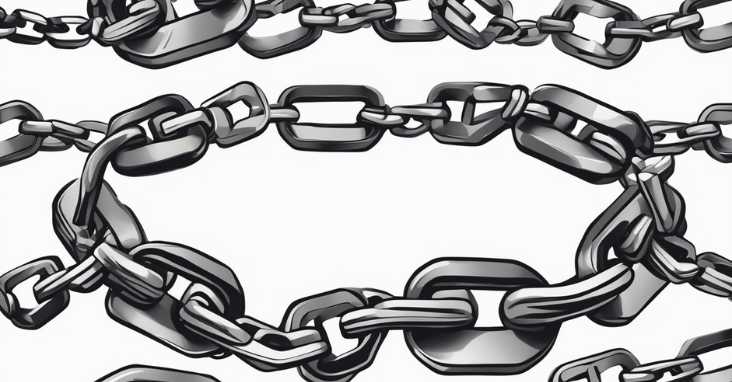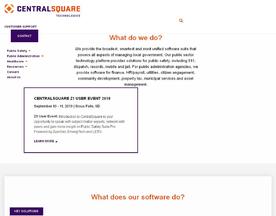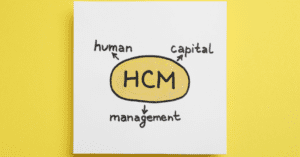What are leadership weaknesses? Leadership weaknesses are traits or skills that hinder a leader’s effectiveness, impacting team morale, productivity, and goal achievement.
Leadership is a critical aspect of any organization, but it is not without its challenges. Even the most successful leaders have leadership weaknesses that can impact their ability to lead effectively. Understanding and addressing these weaknesses is crucial for leaders who want to improve their performance and achieve their goals.

Defining leadership weaknesses can be a complex task, as there are many factors that can contribute to a leader’s shortcomings. Communication challenges, interpersonal dynamics, leadership attitudes, management flaws, vision and direction, accountability and responsibility, personal development, cultural impact, decision-making deficiencies, and leadership outcomes are just a few of the areas that may be impacted by leadership weaknesses. Identifying and addressing these weaknesses requires a deep understanding of the individual and the organization, as well as a willingness to make changes and take action.
Despite the challenges that leadership weaknesses can present, there are many resources available to help leaders improve their skills and overcome their shortcomings. From leadership development programs to coaching and mentorship, there are many options for leaders who want to take their performance to the next level. By recognizing their weaknesses and taking steps to address them, leaders can become more effective and successful in their roles.
Key Takeaways
- Leadership weaknesses can impact a wide range of areas, from communication to decision-making.
- Identifying and addressing these weaknesses requires a deep understanding of the individual and the organization.
- There are many resources available to help leaders improve their skills and overcome their shortcomings.
Defining Leadership Weaknesses
Leadership is a complex skill that requires a range of abilities to be effective. However, even the most successful leaders have leadership weaknesses. Understanding and addressing these weaknesses is crucial for leaders to improve their performance and achieve their goals.
Understanding Weaknesses in Leadership
Leadership weaknesses can manifest in many ways, such as a lack of communication skills, poor decision-making ability, or a failure to inspire and motivate others. These weaknesses can stem from a variety of sources, including personality traits, past experiences, and inadequate training or development.
To address these weaknesses, leaders must first identify them. This can be done through self-reflection, feedback from colleagues, or assessments like 360-degree feedback. Once identified, leaders can work on improving these areas through training, coaching, or seeking out mentorship.
Common Traits of Ineffective Leaders
While leadership weaknesses can vary widely, there are some common traits that ineffective leaders tend to exhibit. These include:
Micromanagement: Ineffective leaders often struggle to delegate tasks and instead try to control every aspect of a project. This can lead to burnout and resentment among team members.
Lack of Vision: Leaders who lack a clear vision for their team or organization can struggle to motivate and inspire others.
Inability to Adapt: Leaders who are resistant to change or unwilling to try new approaches can hinder their team’s ability to innovate and grow.
Poor Communication: Poor communication can be part of leadership weaknesses. Leaders who struggle to communicate clearly and listen actively can create confusion and mistrust among team members.
By understanding these common traits, leaders can work to avoid them and develop their strengths. By improving their weaknesses and building on their strengths, leaders can become more effective and achieve their goals.
To learn more about leadership weaknesses and how to address them, check out this resource from Forbes.
Communication Challenges
Effective communication is a fundamental skill for any leader. However, poor communication skills can hinder a leader’s ability to convey their vision, goals, and expectations to their team. Communication challenges can take many forms, including poor listening skills, unclear messaging, and lack of constructive feedback. In this section, we will explore two common communication challenges that leaders may face: poor communication skills and lack of constructive feedback.
Poor Communication Skills
Poor communication skills can lead to misunderstandings, confusion, and frustration in the workplace. Leaders who struggle with communication may struggle to convey their ideas effectively, leading to a lack of buy-in from their team. Additionally, poor communication can lead to missed deadlines, mistakes, and other issues that can impact the success of a project.
To improve their communication skills, leaders can focus on active listening, clarity, and brevity. By actively listening to their team members, leaders can better understand their concerns and needs, which can help them tailor their communication to be more effective. Additionally, leaders can work on being clear and concise in their messaging, avoiding jargon or overly complicated language.
Lack of Constructive Feedback
Feedback is essential for growth and development, but leaders who struggle with providing constructive feedback may hinder their team’s progress. Leaders who avoid giving feedback or only provide negative feedback can demotivate their team members and hinder their ability to improve.
To provide constructive feedback, leaders can focus on being specific, timely, and actionable. By providing specific feedback, leaders can help their team members understand what they did well and what they can improve on. Additionally, providing feedback in a timely manner can help team members make adjustments quickly, while actionable feedback can provide clear steps for improvement.
Leaders who struggle with communication challenges can benefit from seeking out resources to improve their skills. One such resource is the Harvard Business Review, which offers a variety of articles and resources on communication and leadership. By focusing on improving their communication skills and providing constructive feedback, leaders can help their teams thrive and achieve their goals.
Interpersonal Dynamics

Difficulty in Building Trust
One of the most important aspects of effective leadership is building trust with team members. However, some leaders may struggle with this aspect of interpersonal dynamics. This can be due to a lack of transparency, consistency, or follow-through. When a leader fails to keep their promises or does not communicate openly, team members may begin to doubt their intentions and lose faith in their leader and leads to leadership weaknesses.
Leaders who struggle with building trust may benefit from seeking feedback from team members and actively working to improve their communication and consistency. They can also work to establish clear expectations and follow through on commitments to build trust over time.
According to an article by Harvard Business Review, “Building Trust” by David DeSteno, trust is a crucial component of effective leadership. The article emphasizes the importance of consistency and reliability in building trust with team members.
Inadequate Emotional Intelligence
Another common weakness in interpersonal dynamics is a lack of emotional intelligence. Leaders who struggle with emotional intelligence may have difficulty understanding and responding to the emotions and needs of team members. This can lead to misunderstandings and conflicts within the team.
Leaders can improve their emotional intelligence by actively listening to team members, seeking to understand their perspectives, and responding with empathy and respect. They can also work to develop self-awareness and regulate their own emotions to better manage interpersonal dynamics within the team.
An article by Forbes, “Why Emotional Intelligence Is Essential In Leaders” by Travis Bradberry, highlights the importance of emotional intelligence in effective leadership. The article notes that leaders who lack emotional intelligence may struggle with communication, decision-making, and conflict resolution.
Overall, effective leadership requires strong interpersonal dynamics, including trust-building and emotional intelligence. Leaders who struggle with these aspects can work to improve their skills and seek feedback from team members to build stronger relationships and improve team performance.
Leadership Attitudes

Ego and Leadership
One of the most significant leadership weaknesses is ego. When a leader has an inflated sense of self-importance, it can lead to poor decision-making, a lack of empathy, and a disregard for the needs of others. A leader with an ego may be more concerned with their own success and recognition than the success of the team or organization they lead. This attitude can lead to a toxic work environment and a lack of trust in the leader.
To avoid this weakness, leaders should focus on building confidence without letting it turn into arrogance. It’s important for leaders to recognize their limitations and the strengths of their team members. They should also be open to feedback and willing to admit when they are wrong.
Fear of Vulnerability
Other common leadership weaknesses is a fear of vulnerability. Leaders who are afraid to show vulnerability may come across as unapproachable or uncaring. They may also struggle to build trust with their team members, as vulnerability is often seen as a sign of authenticity and honesty.
To overcome this weakness, leaders should be willing to show vulnerability and admit when they don’t have all the answers. They should also be open to feedback and willing to learn from their mistakes. By showing vulnerability, leaders can build stronger relationships with their team members and create a more positive work environment.
One resource that can help leaders overcome their fear of vulnerability is Brené Brown’s book “Daring Greatly: How the Courage to Be Vulnerable Transforms the Way We Live, Love, Parent, and Lead.” Brown’s research on vulnerability and shame can help leaders understand the importance of vulnerability in leadership and how to overcome their fear of it.
Management Flaws

Effective management is a crucial component of successful leadership, but it is not without its weaknesses. In this section, we will explore two common management flaws that can hinder a leader’s ability to achieve their goals.
Micromanaging vs. Empowerment
One of the most significant management flaws is micromanaging. Micromanagers tend to be overly controlling and can stifle creativity and innovation within their team. This can lead to a lack of trust and respect from team members, which can ultimately harm the overall productivity of the team.
On the other hand, leaders who empower their team members can create a more positive and productive work environment. By delegating tasks and responsibilities, leaders can foster a sense of ownership and accountability among team members, which can lead to increased motivation and engagement.
According to a study by Harvard Business Review, “empowering leadership behaviors were positively related to employees’ innovative behavior, job satisfaction, and psychological well-being.” Therefore, it is essential for leaders to strike a balance between delegating tasks and providing guidance and support to their team members.
Resistance to Change
Another common management flaw is resistance to change. Leaders who are resistant to change can hinder their team’s ability to adapt to new challenges and opportunities. This can lead to missed opportunities and a lack of growth for the organization.
Leaders who are flexible and open to change, on the other hand, can create a more dynamic and innovative work environment. By embracing new ideas and approaches, leaders can encourage their team members to think outside the box and develop creative solutions to complex problems.
According to a study by Forbes, “leaders who embrace change are more likely to be successful in today’s rapidly changing business environment.” Therefore, it is crucial for leaders to cultivate a culture of flexibility and adaptability within their organization.
In conclusion, while effective management is critical to success, it is not without its leadership weaknesses. Leaders who are aware of these management flaws and work to address them can create a more positive and productive work environment for their team members.
Vision and Direction
Effective leadership requires a clear vision and direction for the organization. Without a well-defined purpose and strategy, leaders may struggle to inspire and guide their teams towards success. This section will explore two common leadership weaknesses related to vision and direction: lack of clear vision and inconsistent expectations.
Lack of Clear Vision
Leaders who lack a clear vision often struggle to communicate their goals and objectives to their teams. This can lead to confusion and a lack of direction, making it difficult for employees to understand how their work contributes to the overall success of the organization. Without a clear vision, leaders may also struggle to make strategic decisions and prioritize initiatives.
To address these leadership weaknesses, leaders should take the time to define their vision and communicate it clearly to their teams. This may involve creating a mission statement, setting specific goals and objectives, and outlining a clear strategy for achieving them. Leaders should also ensure that their vision aligns with the values and beliefs of their organization, as well as the needs and desires of their stakeholders.
One resource that may be helpful for leaders looking to develop a clear vision is the Harvard Business Review’s article on “How to Craft a Vision for Your Organization“. This article provides practical advice and examples for creating a compelling vision that inspires and motivates employees.
Inconsistent Expectations
Other leadership weaknesses related to vision and direction is inconsistent expectations. When leaders fail to provide clear guidelines and expectations for their teams, employees may struggle to understand what is expected of them. This can lead to confusion, frustration, and a lack of accountability.
To address these leadership weaknesses, leaders should establish clear expectations for their teams and communicate them consistently. This may involve creating job descriptions, setting performance goals, and providing regular feedback and coaching. Leaders should also ensure that their expectations are realistic and achievable, and that they align with the organization’s overall vision and strategy.
One resource that may be helpful for leaders looking to establish clear expectations is the Society for Human Resource Management’s article on “Setting Expectations for Employee Performance”
This article provides guidance and best practices for setting expectations and holding employees accountable for their performance.
Accountability and Responsibility

Avoiding Accountability
Leaders who avoid accountability for their actions and decisions can quickly lose the trust and respect of their team. Accountability is a crucial aspect of leadership, and it involves taking ownership of both successes and failures. When leaders fail to take responsibility for their mistakes, they risk damaging their credibility and undermining their team’s performance.
One way that leaders can avoid accountability is by blaming others for their mistakes. This approach not only fails to address the root cause of the problem but also creates a culture of fear and mistrust within the team. Instead, leaders should take responsibility for their actions and work with their team to find solutions to the problem.
Another way that leaders can avoid accountability is by failing to communicate openly and honestly with their team. When leaders withhold information or fail to provide feedback, they create a culture of ambiguity and uncertainty. This can lead to misunderstandings, missed deadlines, and poor performance.
Shirking Responsibilities
Leaders who shirk their responsibilities risk damaging their team’s performance and morale. Responsibility involves taking ownership of tasks and ensuring that they are completed to a high standard. When leaders fail to take responsibility, they risk creating a culture of apathy and disengagement within the team.
One way that leaders can shirk their responsibilities is by delegating tasks without providing adequate support or guidance. This approach not only fails to empower team members but also creates a culture of confusion and frustration. Instead, leaders should provide clear instructions and support to ensure that team members can complete tasks to a high standard.
Another way that leaders can shirk their responsibilities is by failing to provide the necessary resources and support to their team. When leaders fail to provide the necessary resources, they risk creating a culture of frustration and resentment within the team. Instead, leaders should work with their team to identify the resources and support needed to achieve their goals.
According to a study by Harvard Business Review, leaders who take responsibility for their mistakes and hold themselves accountable for their actions are more likely to be trusted and respected by their team. Leaders who shirk their responsibilities and avoid accountability risk damaging their credibility and undermining their team’s performance.
Source: Harvard Business Review – The Importance of Accountability in Leadership
Personal Development

Personal development is crucial for any leader who wants to grow and improve. Neglecting self-improvement can lead to stagnation and a lack of progress. There are two key areas where leaders can fall short in personal development: neglecting self-improvement and lacking coaching and training.
Neglecting Self-Improvement
Leaders who neglect self-improvement may become complacent and fail to grow. They may become too comfortable in their current role and fail to seek out new challenges or opportunities for growth. This can lead to a lack of innovation and a failure to adapt to changing circumstances.
To avoid this, leaders should make a conscious effort to continuously improve themselves. This can involve setting goals, seeking feedback, and regularly assessing their own performance. Leaders who are committed to self-improvement are more likely to stay engaged and motivated, and to inspire their teams to do the same.
Lack of Coaching and Training
Leaders who fail to provide coaching and training to their teams may be hindering their growth and development. Without proper guidance and support, team members may struggle to reach their full potential. This can lead to a lack of productivity and a decrease in morale.
To address this, leaders should prioritize coaching and training as part of their leadership strategy. They should provide regular feedback and guidance to their team members, and seek out opportunities for professional development. By investing in their team’s growth, leaders can create a more engaged and motivated workforce.
Overall, personal development is a critical component of effective leadership. By prioritizing self-improvement and providing coaching and training to their teams, leaders can create a culture of growth and innovation. For more information on personal development, check out this resource from Forbes.
Cultural Impact

Leadership weaknesses can have a significant impact on the culture of a team or organization. This section will explore two of the most common cultural impacts of poor leadership: undermining team culture and neglecting employee engagement.
Undermining Team Culture
Effective leadership is essential for building a positive team culture. When leaders fail to set a good example, team members may become disengaged, leading to a decline in morale and productivity. Leaders who do not prioritize team building activities or do not encourage open communication can create a toxic work environment that can be difficult to overcome.
To avoid undermining team culture, leaders should prioritize team building activities and create an environment where open communication is encouraged. This can include regular team meetings, one-on-one meetings with team members, and social events outside of work. These activities can help build trust and encourage collaboration, which can lead to a more positive team culture.
Neglecting Employee Engagement
Employee engagement is essential for maintaining productivity and morale within a team or organization. When leaders fail to prioritize employee engagement, team members may become disengaged, leading to a decline in productivity and an increase in turnover.
To avoid neglecting employee engagement, leaders should prioritize regular feedback and recognition. This can include regular check-ins with team members, providing opportunities for professional development, and recognizing team members for their contributions to the team. By prioritizing employee engagement, leaders can create a more positive work environment that encourages productivity and reduces turnover.
It is important for leaders to understand the impact their actions can have on team culture and employee engagement. By prioritizing team building activities, open communication, and employee engagement, leaders can create a positive work environment that encourages productivity and reduces turnover.
For more information on the importance of team culture and employee engagement, check out this resource from the Society for Human Resource Management.
Decision-Making Deficiencies

Effective decision-making is a crucial aspect of leadership. However, some leaders struggle with decision-making, which can lead to negative consequences for their organizations. This section explores two common decision-making deficiencies that leaders may face: indecisiveness and delay, and poor problem-solving skills.
Indecisiveness and Delay
Indecisiveness and delay can cause leaders to miss opportunities and fail to address problems effectively. Leaders who struggle with indecisiveness may be hesitant to make decisions, often due to fear of making the wrong choice. This can result in delayed decisions, missed opportunities, and a lack of progress.
Leaders who struggle with indecisiveness can benefit from developing their decision-making skills. This may involve seeking input from others, gathering and analyzing data, and considering the potential risks and benefits of different options. By taking a more systematic approach to decision-making, leaders can become more confident in their ability to make effective decisions.
Poor Problem-Solving Skills
Leaders who lack strong problem-solving skills may struggle to identify and address issues within their organizations. This can lead to a range of negative outcomes, including decreased productivity, low morale, and missed opportunities.
Effective problem-solving involves identifying the root cause of an issue, generating potential solutions, and selecting the best course of action. Leaders who struggle with problem-solving may benefit from seeking input from others, gathering data and information, and considering the potential consequences of different solutions.
By developing their problem-solving skills, leaders can become more effective at identifying and addressing issues within their organizations. This can lead to improved productivity, increased morale, and better outcomes for the organization as a whole.
For more information on improving decision-making and problem-solving skills, leaders may find the following resource helpful: Harvard Business Review: How to Improve Your Critical Thinking Skills and Make Better Business Decisions.
Leadership Outcomes

Impact on Team Productivity
Leadership weaknesses can have a significant impact on team productivity. When a leader lacks the ability to effectively communicate goals and expectations, team members can become confused and unsure of what is expected of them. This can lead to delays in completing tasks and a decrease in overall productivity. Additionally, a leader who micromanages their team can cause frustration and a lack of motivation, which can also lead to decreased productivity.
According to a study by Gallup, teams with highly engaged leaders are 21% more productive than those with disengaged leaders. This highlights the importance of strong leadership in achieving high levels of productivity within a team. Leaders who are able to inspire and motivate their team members can create a positive work environment that fosters productivity and success.
Effects on Company Success
The impact of leadership weaknesses is not limited to team productivity; it can also have a significant effect on the success of the entire company. Leaders who lack the ability to make difficult decisions or take calculated risks can hinder the growth and progress of the company. Additionally, leaders who are not able to effectively manage and allocate resources can lead to inefficiencies and missed opportunities.
A study by Harvard Business Review found that companies with strong leadership outperform their competitors by a significant margin. This highlights the importance of strong leadership in achieving company success. Leaders who are able to effectively communicate a vision and strategy for the company can inspire their team members and drive the company towards success.
In conclusion, leadership weaknesses can have a significant impact on team productivity and company success. It is important for leaders to recognize their leadership weaknesses and work to improve them in order to create a positive work environment and achieve success. By investing in leadership development and training, companies can ensure that their leaders have the skills and abilities necessary to lead their teams towards success.
[Source: Gallup – How to Build a High-Performance Culture]
Frequently Asked Questions

What are common leadership weaknesses that can hinder team performance?
Leadership weaknesses can vary depending on the individual, but some common ones that can hinder team performance include a lack of communication skills, indecisiveness, micromanaging, and a lack of empathy. These leadership weaknesses can lead to confusion, frustration, and a lack of motivation among team members.
How might leadership weaknesses impact organizational effectiveness?
Leadership weaknesses can have a significant impact on organizational effectiveness. For example, a leader who struggles with decision-making may cause delays in important projects, while a leader who micromanages may stifle creativity and innovation. Additionally, a leader who lacks communication skills may create misunderstandings and conflicts among team members.
In what ways can a leader’s personal weaknesses affect their decision-making process?
A leader’s personal weaknesses can affect their decision-making process in various ways. For instance, a leader who has a fear of failure may avoid making difficult decisions, while a leader who is overly confident may make impulsive decisions without considering all the facts. It is important for leaders to be aware of their personal biases and work to overcome them.
What are potential downsides to certain leadership styles?
Different leadership styles have their own potential downsides. For example, a leader who is too authoritarian may create a culture of fear and resentment among team members, while a leader who is too hands-off may not provide enough guidance and support. It is important for leaders to understand the strengths and weaknesses of different leadership styles and adapt their approach to fit the needs of their team.
How can a leader identify and address their own weaknesses?
Leaders can identify their own weaknesses by seeking feedback from others, reflecting on their own behavior and decision-making, and taking assessments or personality tests. Once they have identified their weaknesses, leaders can address them by seeking training or coaching, delegating tasks to others, and practicing new behaviors.
What strategies can a leader use to mitigate their weaknesses during an interview?
During an interview, leaders can mitigate their weaknesses by being honest about their areas for improvement and demonstrating a willingness to learn and grow. They can also highlight their strengths and achievements to show that they are capable of overcoming their weaknesses. It is important for leaders to be self-aware and open to feedback in order to continuously improve their leadership skills.
For more information on leadership weaknesses, check out this article from Harvard Business Review.
Compare hundreds of Human Capital Management Software in our Software Marketplace















